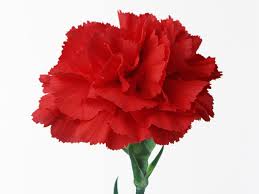
记忆方法
音译“康乃馨”。
中文词源
carnation 康乃馨
来自coronation的拼写异化形式,原指用作花环的花。拼写受词根carn(肉)影响俗化,实际上大多数该类型花呈粉红肉,而非肉色。
英语词源
- carnation (n.)
- "Dianthus Caryophyllus," commonly also called "pink," herbaceous perennial flowering plant native to southern Europe and abundant in Normandy, 1530s, of uncertain origin. The early forms are confused; perhaps (on evidence of early spellings) it is a corruption of coronation, from the flower's being used in chaplets or from the toothed crown-like look of the petals.
Or it might be called for its pinkness and derive from Middle French carnation "person's color or complexion" (15c.), which probably is from Italian dialectal carnagione "flesh color," from Late Latin carnationem (nominative carnatio) "fleshiness," from Latin caro "flesh" (see carnage). This carnation had been borrowed separately into English as "color of human flesh" (1530s) and as an adjective meaning "flesh-colored" (1560s; the earliest use of the word in English was to mean "the incarnation of Christ," mid-14c.). OED points out that not all the flowers are this color.
权威例句
- 1. He was wearing a carnation in his buttonhole.
- 他在扣眼里插了一朵康乃馨。
- 2. He was wearing a carnation in his lapel.
- 他的翻领里别着一枝康乃馨.
- 3. He had a white carnation in his buttonhole.
- 他在纽扣孔上佩了朵白色康乃馨.
- 4. The fine carnation of their cheeks is perennial as sunlight in the seventh heavens.
- 她们面颊的美丽的淡红色象七重天里的阳光始终辉煌灿烂.
- 5. Miss Anna Jarvis's mother's favorite flower was the white carnation.
- 安娜·维丝小姐的母亲最喜爱的花是白色康乃馨.